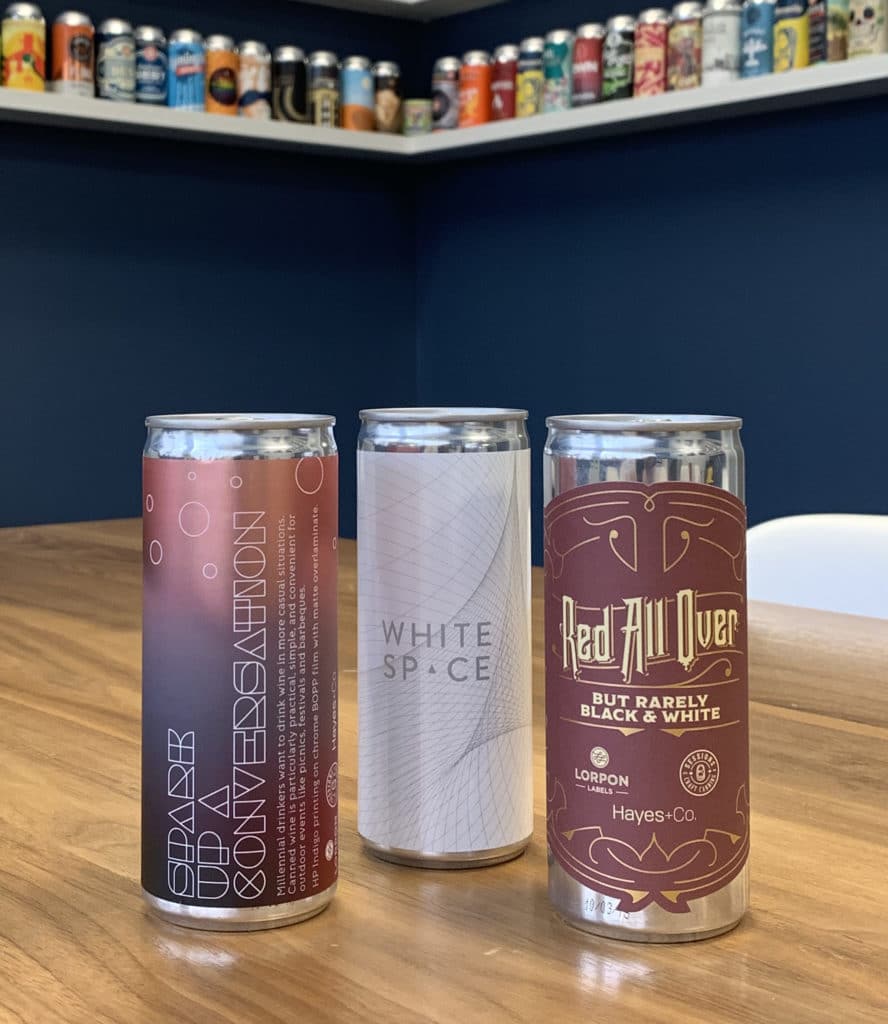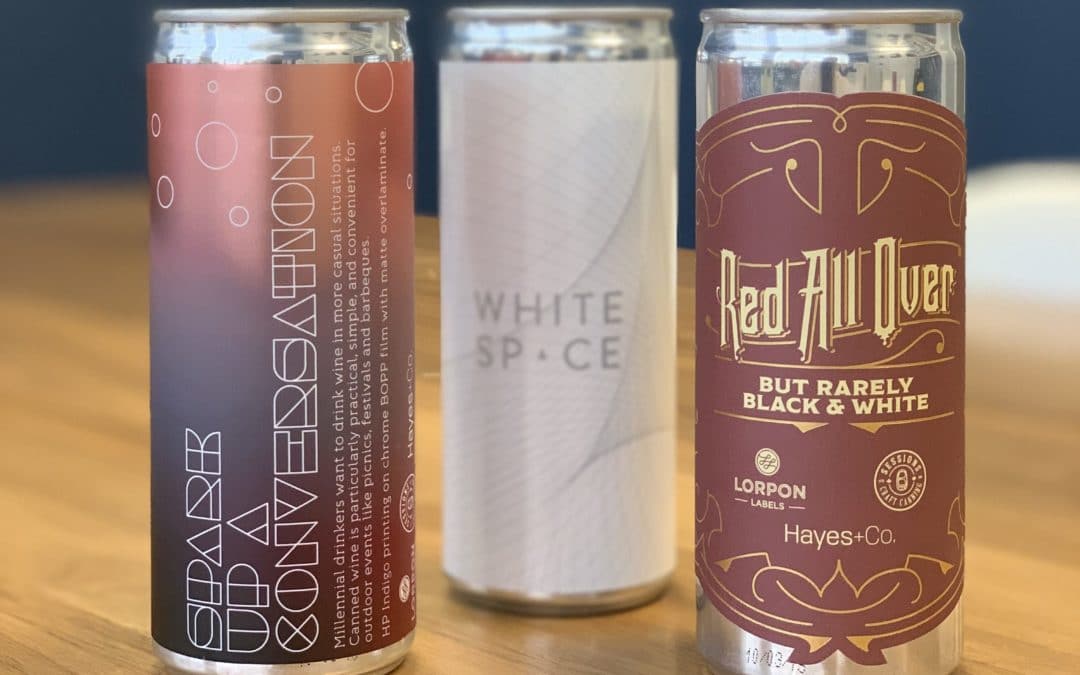Quick: Do you know what the average wine-drinker wants? Hint: It has little to do with “mouth-feel”. Savvy sippers want convenience and variety, which is why there is an increasing demand for wine in a can. Before you turn your nose up at the concept, take a moment to consider how boxed wine—once dismissed as “cardboardeax”—has expanded in the Canadian market. Similarly, wine in a can has all the right ingredients to shake up the industry. A fresh product concept means astute brands have a new opportunity to #owntheshelf with creative label design solutions.
Why wine in a can?
Beverage packaging is changing. Production, storage, and environmental considerations have all had an effect on how we package wine—despite the naysayers. When you think about the life and lifestyle of the average wine-drinker, wine in a can may be as close to perfect as you can get.
- Portability – There is this romantic idea about wine—that it comes in glass bottles topped by a cork. But these are heavy and fragile. Aluminum cans are light and shatter proof, making them super convenient to take camping or to the cottage, to dinner parties or barbecues, or to outdoor events or the pool.
- Longevity – Wine in a can is not meant to be cellared, but metal offers the best barrier of any substrate, providing the longest product longevity.
- Variety – Consumers can sample different varieties of wine. Wine in a can comes in individual single-serving cans which can be mixed in packs of four or six. Sample-happy sippers don’t have to commit to an entire bottle of wine.
Labelling considerations for wine in a can
Consumers are convinced about wine in a can so now your job is to draw them to your product. An eye-catching label is your first order of business. At Lorpon we recommend labels, which may not surprise you coming from a label company, but we have good reasons to make the claim.
- Flexibility – Some brands go with printed cans or sleeves, but when you choose labels you have the advantage of the option of shorter press runs. This means you can label small batch wines, multiple varieties, seasonal launches, or limited-edition runs, all without having to meet the minimum requirements—usually in the neighbourhood of 150,000 pieces.
- Creativity – Not having to meet printing minimums means you can get as creative as you want to with your packaging. And when you work with Lorpon, you’ve got access to an extensive set of materials, finishes, and embellishments. We’re not saying you should release a canned wine with a die-cut, embossed foil label—but you could. More likely, though, you’ll want to create something classy, a product that is styled like a wine bottle.
 Take, for example, these sample labels designed by Hayes and Co for Lorpon. From spare and simple to intricate and complex, each communicates volumes about the product. And, for wineries who need it, Lorpon Labels has a partnership with Sessions Craft Canning offering on-demand full-service packaging.
Take, for example, these sample labels designed by Hayes and Co for Lorpon. From spare and simple to intricate and complex, each communicates volumes about the product. And, for wineries who need it, Lorpon Labels has a partnership with Sessions Craft Canning offering on-demand full-service packaging.
For oenophiles, wine in a can is about to make their hobby easier. For brands, it’s a chance to #owntheshelf.
